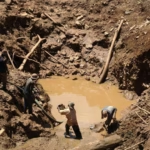Neighborhood parks in low-income communities in four cities should be re-envisioned by early summer 2022. According to the Regional Plan Association (RPA), four pilot projects in Poughkeepsie and Buffalo in New York, and Jersey City and Passaic in New Jersey should be almost complete by that time. Two more parks will continue to be developed as momentum for the construction of more health-boosting green spaces in urban environments.
The RPA said that they will be able to measure the initiative’s success by several factors. Those factors include the number of parks that are safe, resilient, well-frequented, and in easy access of low-income communities, sustainable ongoing marketing of those spaces for residents, and the number of residents those parks serve. According to the association, urban green space plays an important role in alleviating some environmental problems as well as health disparities.
Green Space And Lower Covid Infection Racial Disparity
Far from being wishful thinking, the link between green space and health disparities was borne out in a study by the University of Illinois Urbana-Champaign’s William Sullivan, University of Hong Kong’s Bin Jiang, and City University of Hong Kong’s Yi Lu. Jiang led the study. The researchers found that a high number of green spaces in a county made it more likely that Black and white people had greater equality in accessing those spaces and the health benefits they offer. One of the outcomes of those benefits meant less disparity in Covid-19 infection rates between those population groups.
The researchers reasoned that the spread of coronavirus via aerosol particles is increased in indoor settings that do not have enough ventilation. Access to green spaces meant people spent more time outdoors, where easier social distancing and air movement helped reduce viral spreading. Additionally, access to green spaces helped promote physical activity, reduce stress, and improve mental health, all of which can enhance the immune system. According to Sullivan, the team’s research highlighted the importance of local and regional governments investing in green space development.
Type Of Green Space Is Important
Urban hydrologist Fushcia-Ann Hoover explained to Eos that the type of green spaces developed in urban areas is important. One reason for this is that historically low-income communities not only have less green space, but the spaces they do have are generally lower in quality than those in higher-income areas.
According to water resources engineer Kimberly Duong, urban green spaces should be developed on a case-by-case basis if they are truly to benefit a community. Managers of the development should take an area’s soil conditions, climate, geography, and water supply needs into account. Also, proper land clearing should be a priority. It’s important to remove old shrubs and trees infested with parasites or diseases before developing a space to contribute to its long-term viability.
When urban green spaces are developed, they should be designed intentionally so that they meet the community’s needs. This cannot be done without dialogue and engagement between project managers and communities. According to the World Resources Institute, equitable green planning for under-served neighborhoods in urban areas needs innovative funding. Furthermore, community ownership of those spaces must be encouraged and protected to prevent gentrification.
Virginia Polytechnic Institute and State University researcher Theodore Lim told Eos that having access to the same amount of park space is still not enough to make people feel safe or welcome in those spaces. He explained that community dialogue and park design must recognize the systematic issues that continue to shape communities’ experiences, as well as the historical roots of those issues.














